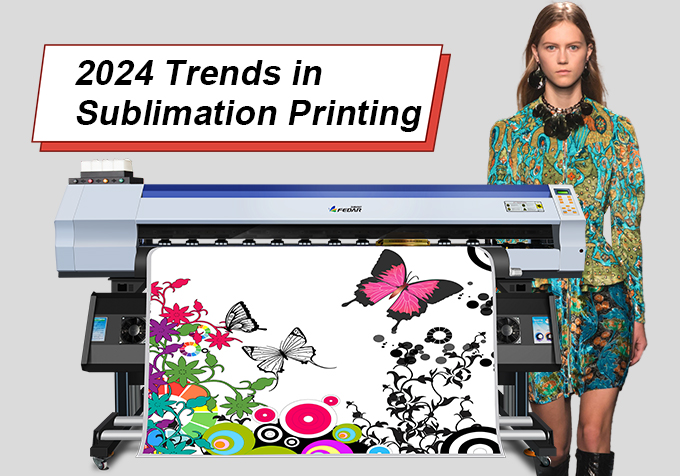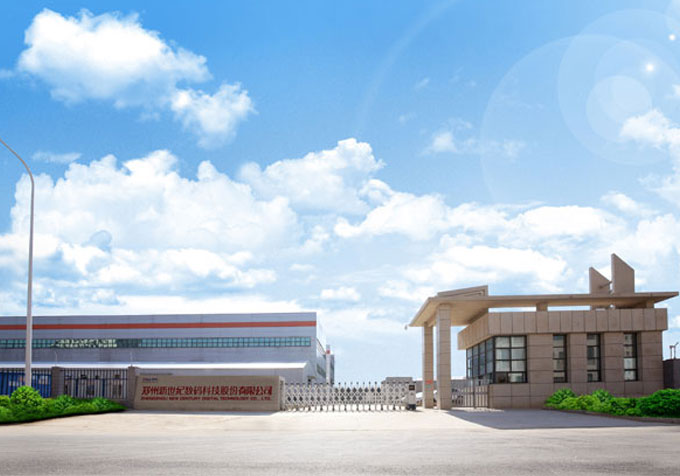09
Sep
Want a sublimation printer with a wide range of applications?Learn about the latest developments in market trends here!
In recent years, there has been a significant increase in the demand and production of dye-sublimation printers. These printers are known for their versatility, sustainability, and high-quality results. From personal use to promotional products to the garment industry, more and more people are choosing sublimation printers for their printing needs because of the design flexibility they offer.

Sublimation is a physical process whereby a solid substance, such as dye-ink, turns into a gas without going through liquefaction. Sublimation printers are designed to transfer ink onto a substrate using this process. They work by infusing the artwork onto the receiving paper; the paper is then placed onto the product to be put under a heat press. The heat and pressure permeate the ink into the material, producing high-quality, durable, and vibrant results.
Mordor Intelligence has estimated the dye-sublimation printing market size to be a whopping USD 15.97 billion in 2024. The market size is expected to grow to USD 26.23 billion by 2029. They’ve forecasted a compound annual growth rate (CAGR) of 10.44% during 2024-2029.
In recent years, we have seen an increasing demand for sublimation printers, prompting manufacturers to produce more efficient and high-volume printers. The rapid growth of the textile industry in China and India, coupled with the demand for quicker, more flexible printing methods, has contributed to this trend.
According to reports, five major companies are producing high-quality dye sublimation printers that dominate the market:
Seiko Epson Corporation
Mitsubishi Electric Corporation
Mimaki Engineering Co. Ltd.
Roland DGA Corporation
Agfa-Gevaert Group
Other key players in the market are Colorjet Group, Sawgrass Technologies, HP, Mutoh Europe NV, and Dai Nippon Printing.
Several factors are driving the rapid growth of the dye sublimation printer market. We’ll discuss them all one by one:
Dye-sublimation printers produce high-quality photographic images on a variety of receiving materials. Their versatility and durability make them desirable for people worldwide, increasing their demand.
Rapid technological developments have led to efficient, industrial-use printers with improved printheads, nozzles, and other components requiring less maintenance. This makes them feasible for business owners, thus increasing their demand.
There has been an increasing use of sublimation printers in the garment industry because these printers offer design flexibility while remaining cost-effective.
Dye-sublimation is perfect for producing customized accessories and home textile items. It is also being used in upholstery and furniture. As the demand for personalization increases, sublimation printers become more desirable.
Moreover, new players and start-ups easily raise funding to develop cutting-edge printer technology. This also leads to market growth.
Increasing urbanization and higher disposable incomes have led to the growth of the home decor industry. Urban culture is becoming more dominant; thus, retail accessory stores use sublimation printers to fulfill everchanging customers’ demands.
In the Asia Pacific, especially China and India, there has been rapid growth in the textile sector. With ever-evolving fashion trends and the rise of e-commerce, more and more clothing manufacturers are adopting sublimation printing.
Several different types of dye sublimation printers are available on the market today. Each type produces a specific texture and appearance in the final print. We’ve listed the varying classes and sub-classes of dye sublimation printers below:
Also known as the “T-shirt clam printer,” this type is the most popular because it is used to print onto T-shirts. Clam printers are affordable, durable, and great for personal and business users.
Sublimation printing is no longer limited to just fabrics; the swing-away dye sublimation printer is ideal for printing onto denser materials, like photo frames, mugs, and other accessories. In this process, the material has to be laid in a specific way in the printer to get optimal results.
There are generally two kinds of calendar press dye-sublimation printers:
The electric calendar press printer is more affordable because it gives quick results. The heating and cooling down of the material are achieved faster, which makes this printer ideal for small shop owners.
Oil Drum
The oil drum also has its perks; here, the production time is longer, but the color richness in the final prints makes up for it.
The name is self-explanatory; this type uses a flat surface for placing the product and another flat or cylindrical surface for printing. There are two types here as well:
Manual Flatbed
The manual flatbed allows the perfectionists out there complete control of their product throughout the printing process. They require a more hands-on, more involved approach.
Pneumatic Flatbed
Pneumatic flatbeds allow for complete automation of the printing process. These also offer more durability and robustness but are pricier than the manual ones.
A 3D vacuum heat press is the best choice for a unique printing project. If the items you choose to print on have irregular shapes involving edges and curves, only a 3D printer can meet your expectations.
Single presses are best for printing simple, similar designs repeatedly. They’re small and cheap, thus a perfect choice for small-scale producers or hobbyists.
The dye-sublimation printer market is flourishing because of several factors, the most important being the textile industry’s adoption of sublimation in manufacturing. As printers get more efficient and eco-friendly, sublimation is bound to become more popular. Major players in the market are moving toward sustainability and eco-friendliness, making this industry more promising for the future.
A good grasp of market trends helps business owners make the right decision quickly, facilitating them to navigate the business complexities that come their way very often.
If there's anything we can do to further showcase machines' features, please let us know.
Email: sale@fedar.net
Whatsapp: +86 15515715397
Our company has over 30 models of printers with independent intellectual property rights and patents. Marketed under the esteemed brands of Skycolor, Stormjet, and Fedar brands, these printers cover a wide range, including digital textile printers, UV printers, eco-solvent printers and more. Known for their exceptional quality and performance.
